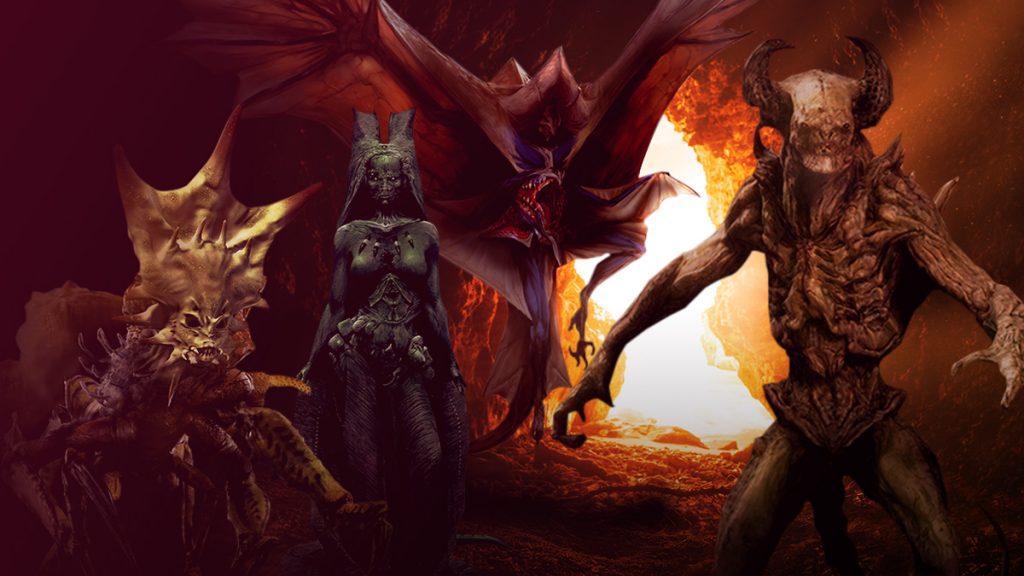Following research conducted by the Department of History and Natural Sciences, we have reached a stage where we can make visual adaptations from ancient scripts and findings. In this article, we document the creative process behind the first visuals of the Underworld Demons.
Capturing Moments
When constructing designs, we strive to make the compositions as crisp as possible, paying particular attention to movement, clarity of personality, and physicality. In addition to these factors, Demons require the following considerations:
- Story
- Personality
- Movement
- Traits of Species
- Colour
- Aggression
- Stance and Posture
- Aesthetics, Texture, and Physical Features
The Approach
Most Demon characters have their own stories and purpose in the Underworld. To cause chaos and consume negativity were expected findings, but some had specific goals and needs to keep them going. Additionally, historians provided basic storylines, which were the primary guidance for our designers to depict the Demons accurately.
Serta (Dragon of Weather)
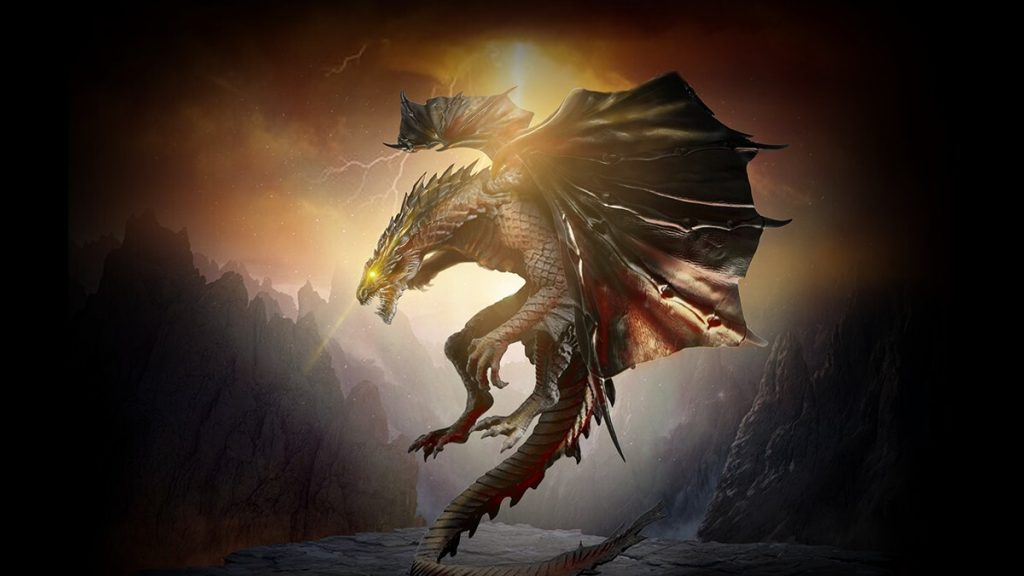
Serta is a fantastical dragon living in this parallel world. To demonstrate its dominance in terms of size and terror emanating from its wingspan, we looked to HBO’s show “House of the Dragon” (HOTD) for inspiration regarding textures and scales. HOTD also seems to accurately portray emotion in their Dragons. For Serta’s statue environment, we wanted to make it the most stand-out, with the floating rock and its narrow access, presented as a fierce-looking Dragon above your head. Showing the proportion of the statue was vital for future gamers to understand how immense Serta was. Additional features such as wing spikes or horns further enhanced its physical characteristics.
Selkum (Fire Dragon)
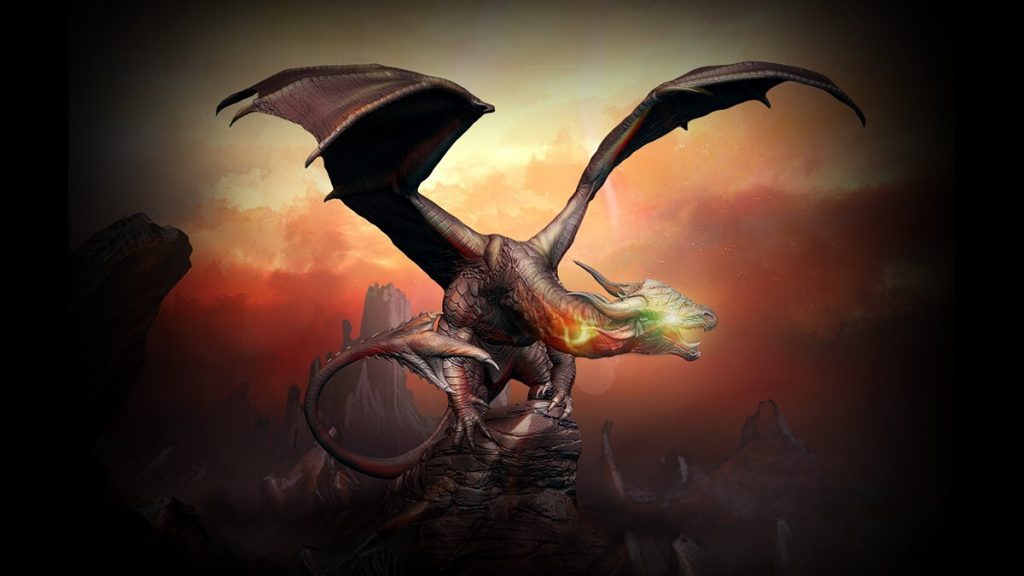
Selkum is more tenacious and agile. Being at least five times smaller than Serta, it is quicker to attack its prey and pounce with a fiery blaze. We made its neck thicker and longer to accommodate the fire gland chamber. The tail extends at the tip to provide Selkum more airtime and balance while spitting fire mid-air. This design was inspired by the salamander reptile family, with a giant head in proportion to the rest of the body.
Triton (Dragon of Acid)
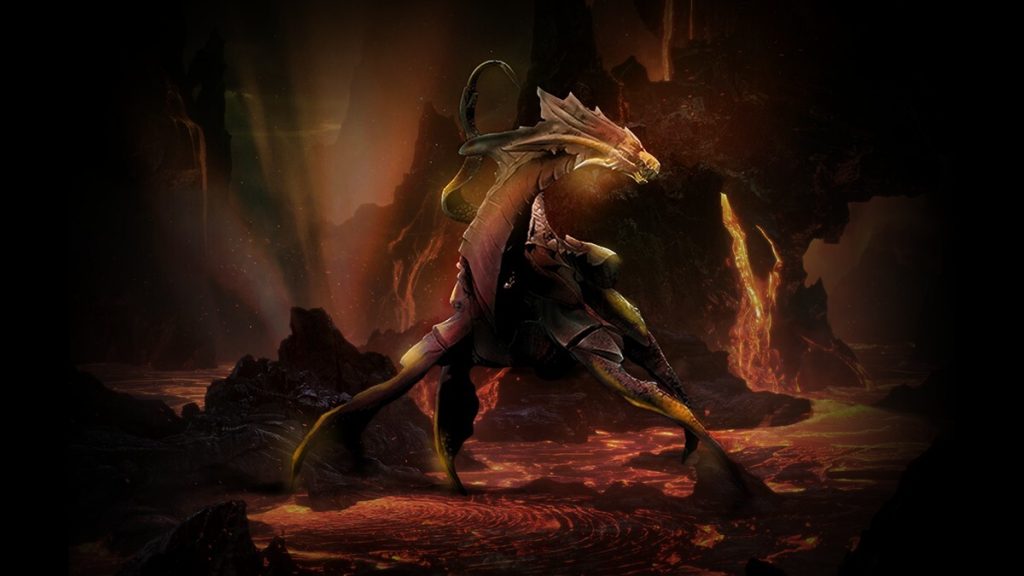
Triton is the second largest of the four dragons and an acid-spitter. We decided to show it in the Underworld’s deep realm, where hot molten lava jets surge. The body of Triton is mainly that of a cretaceous creature, given its evolution in Arcadian Waters. This allows Triton to swim and cruise through narrow trajectories in the Lootian Oceans. Design-wise, giving it sharp edges on its feet makes this dragon more lethal.
Grungentrun (Land Dragon)

Grungentrun is snake-like, but adding the wings gives it an element of surprise attack. We consider this dragon to be most feared since it can charge and pounce at its target in an instant. It can also fly! Not as high as the others since it has to carry its large body. For the visual, a full extension of Grungetrun is best composed to show what Demon hunters can expect.
Ganeni (Beast of Flame)
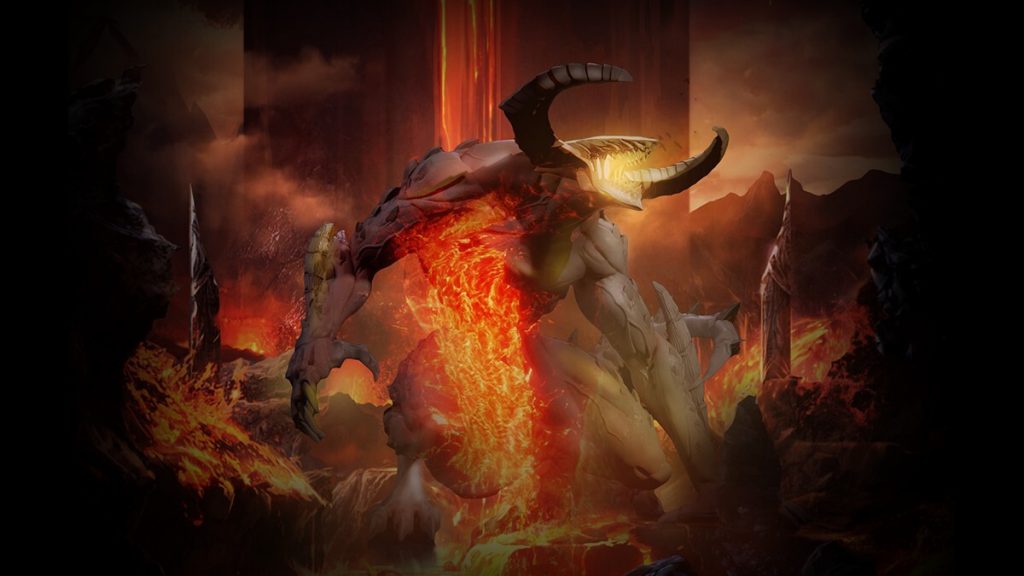
A failed experiment can result in chaos. Such is the case of Ganeni. Having been titled “beastlike humanoid,” Ganeni was challenging for us to portray. It was then decided to adapt some features from Niefel to put in Ganeni. For example, Niefel’s trident has horns, which could be a historical concept to add to the Lore for Ganeni to represent Niefel’s trident. Ganeni’s visual is also fiery to show how parts of its body remained incomplete—especially its face, where only the mouth can be recognized.
Kakortal (Giant Water Crab)
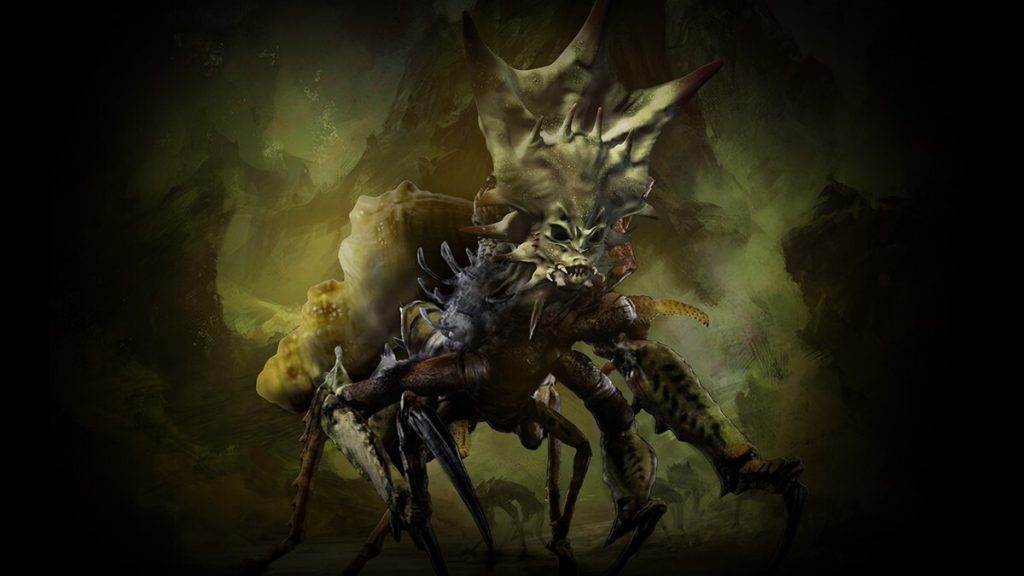
Kakortal was inspired by deep water creatures adapted to low-light environments and is ugly, spiteful, and uncomfortable looking. We gave it body extensions, strings, and crab spikes to cater to movement and sense prey targets. The green color is best suited for camouflaging in the deep algae flora. Kakortal can wrap itself into its shell conch when dormant or even fake an attack.
Eshay (Armored Cat)
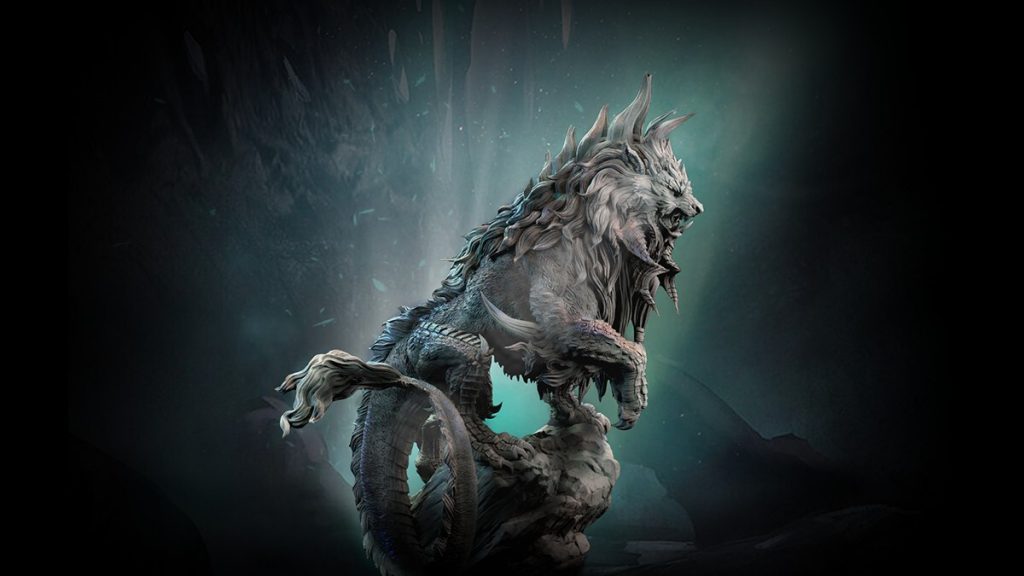
The white color of Eshay represents the high altitudes of its adaptation. We also added armor scales on its bane to make it more dramatic and epic. One lash of its tail can cause lethal damage since crocodile tails inspired it.
Scott (Poisonous Spider)
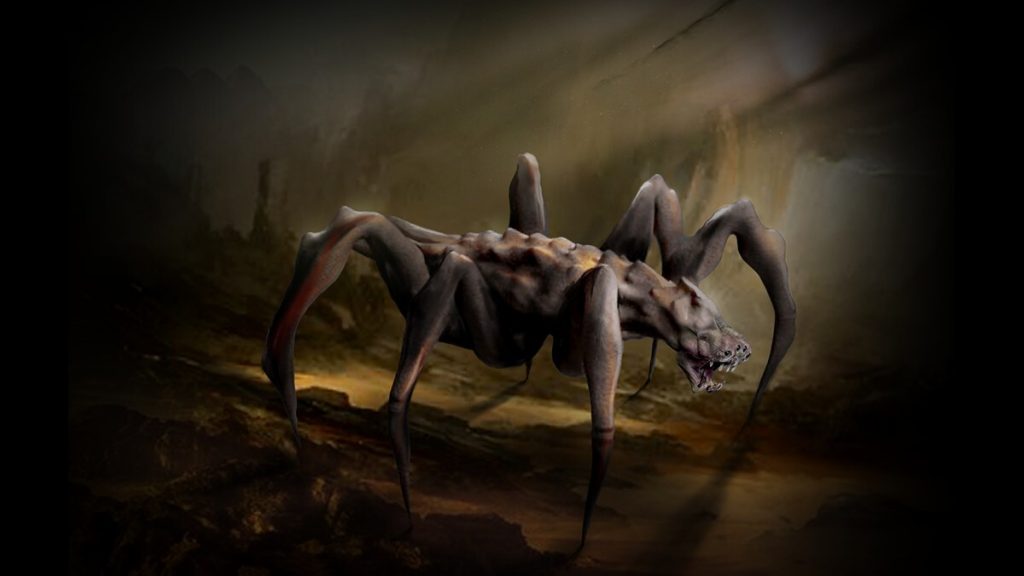
Scott is a menacing creature, and its story is even more unsettling. To depict this, a creepy and quirky version of a spider would best represent it. Like Triton’s feet, Scott’s movement depends on the high-pressure points it can exert from its legs. Scott has six legs and is faster than any other spider, making it difficult to pin down.
Medea (Mage of Creation)
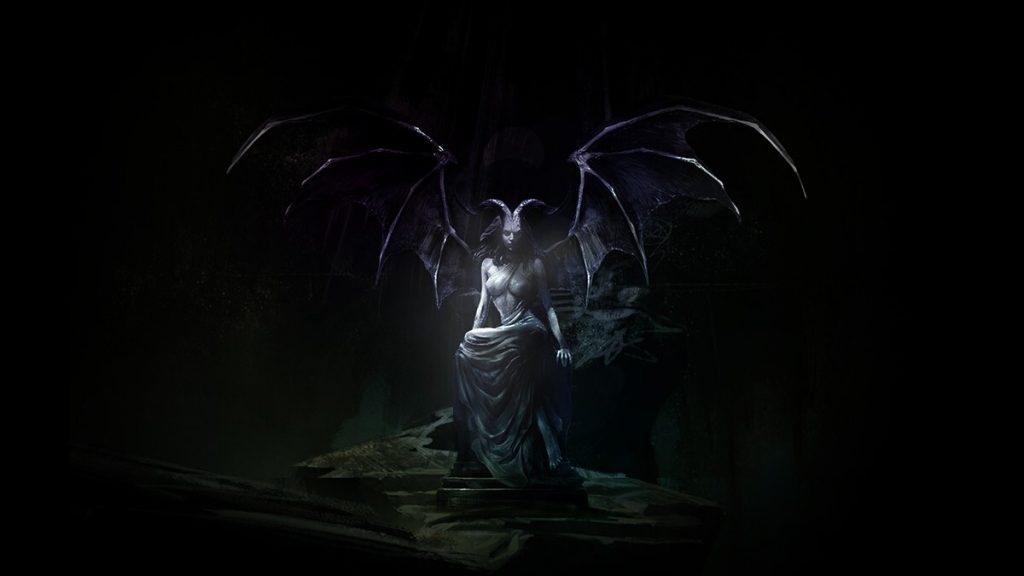
We refer to her as the Queen of Demons. Medea has similar vibes to a Succubus, hypnotizing and enchanting her prey. Placing her on a throne best conveys her domination and control power in the Underworld. Her wings make her stronger and give her the ability to roam.
Harpy (Bird Woman)
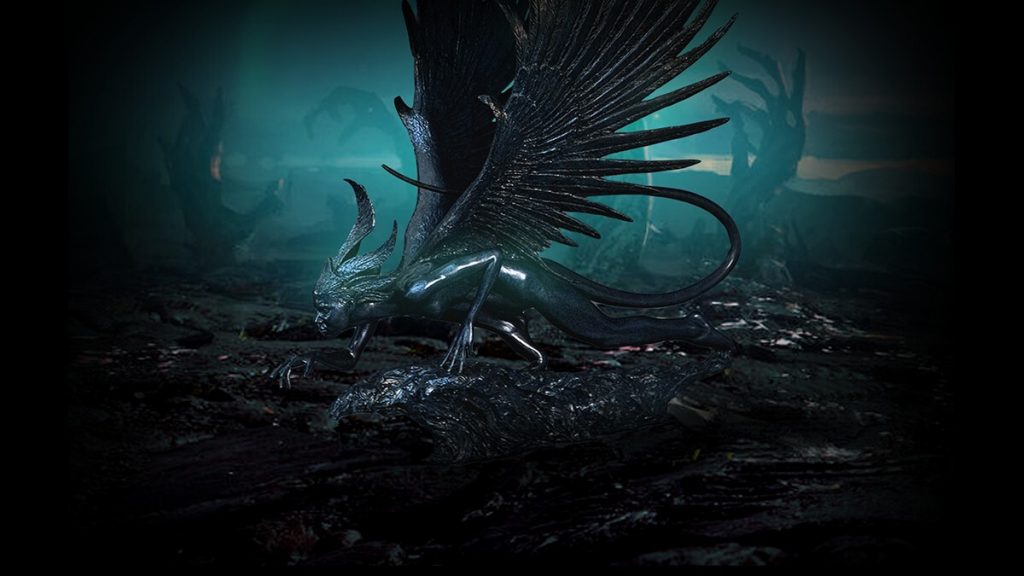
One of our favorites, Harpy, is a Silent Killer. Her wings are sharp and made of rare metal. Her pose indicates grace and how she can mislead her prey into their death. If one looks at the artwork, Harpy can blend into the structures of its environment, adding a camouflage feature to her skill set.
Wongliang (The Trickster)
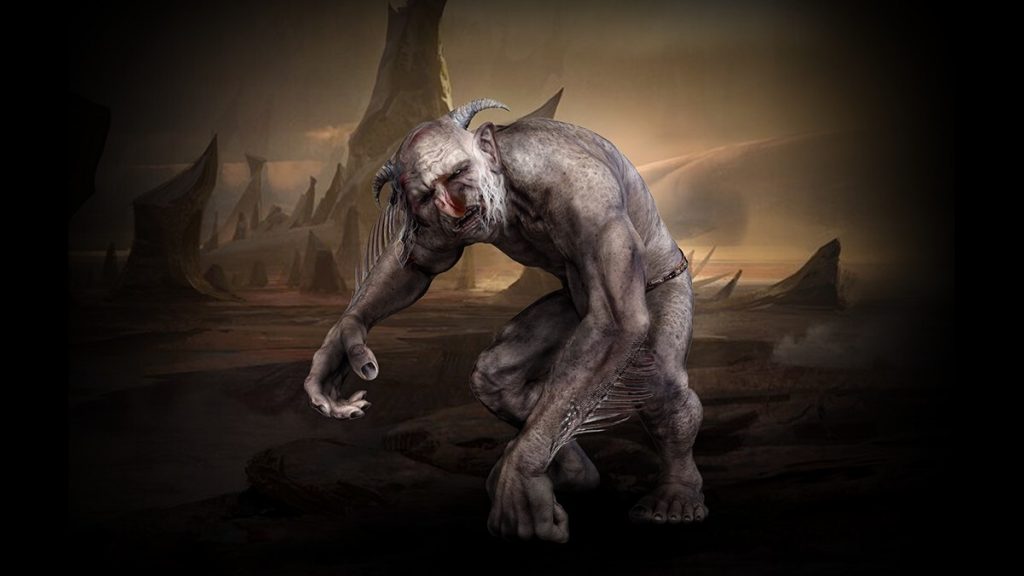
As the historical description states, Wongliang is a Dwarf. This was the initial concept of its design, and Gollum, the animalistic creature from the Lord of the Rings story, mainly inspired us. In addition to its political skill set and cunningness, we thought of making Wongliang monster-like when it is in attack status. It can pump itself up to intimidate its opponent. Spikes along his arms and legs were added features to make it menacing.
Legion (Boar)
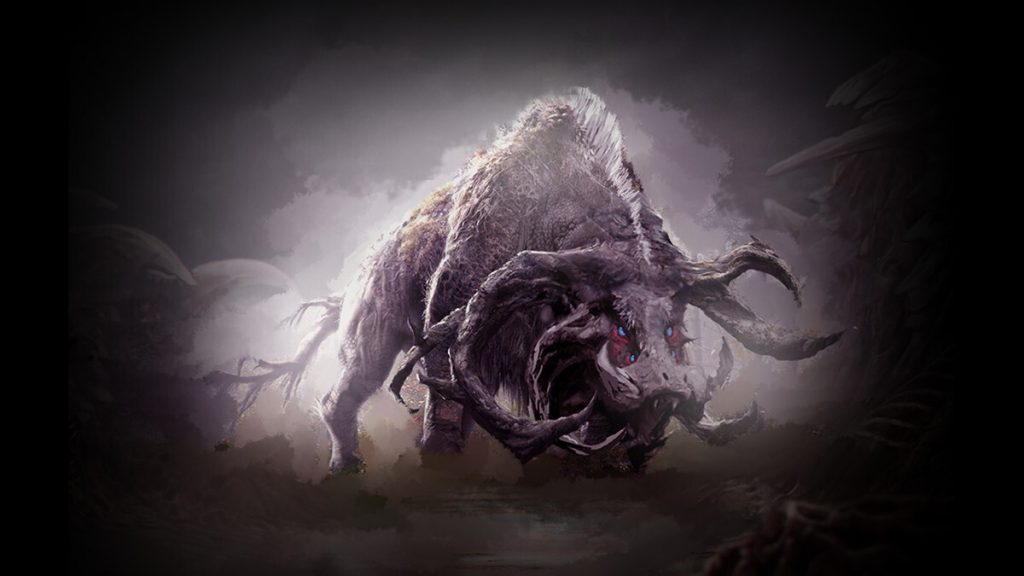
Legion was one of the first few demons we sketched. It is depicted as prehistoric, and incorporating in-grown plants and flora shows how ancient this boar is and how tenacious it has been. Exaggerating the tusks was fun to experiment with and proved fitting to the story.
Norash (Winged Demon)
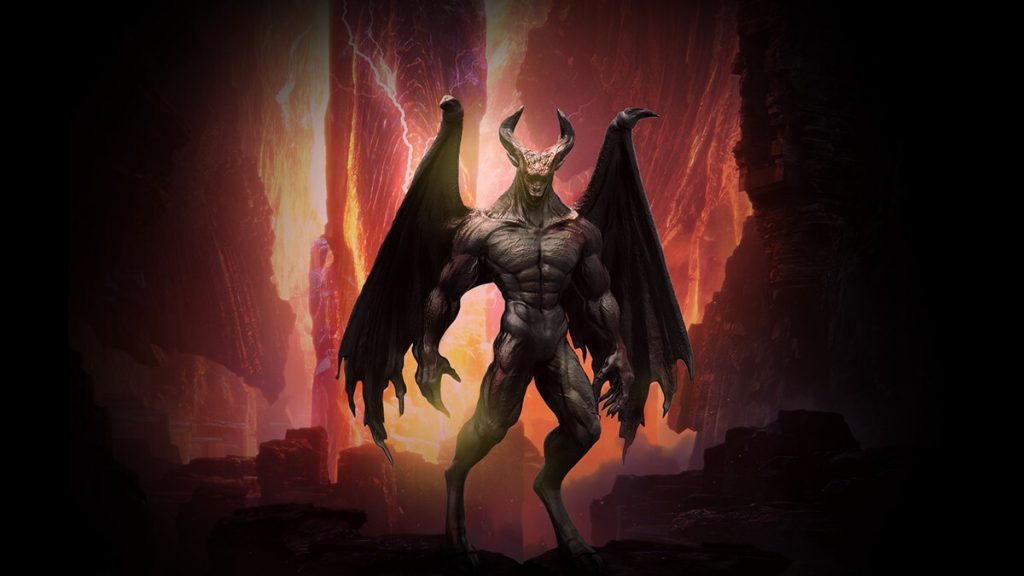
Norash is imposing, intimidating, and fearless. Very muscular and lean, Norash can attack with one blow or pounce with its hooved legs to kill its prey instantly. Once done, they like to flee into the shadows to avoid tracking. Adding functional wings serves this primary purpose.
Norashi (Winged Demon)
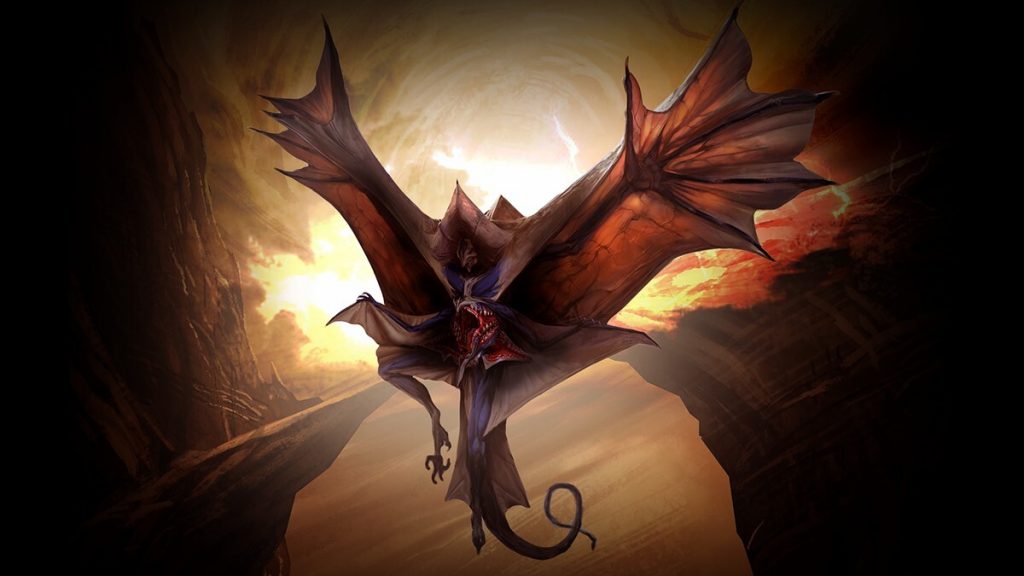
Norashi is even rarer than Norash. Making their features distinct, despite their relationship, makes them very risky to battle. Norash could be the lure, while Norashi passes the final blow with its fierce transformation and red scales. If one encounters Norash, be aware that Norashi is nearby for a surprise attack. Moreover, Norash has no mouth; it has a stomach that feeds itself with sharp teeth once latched onto a kill.
Bobayaga (Witch and Illusionist)
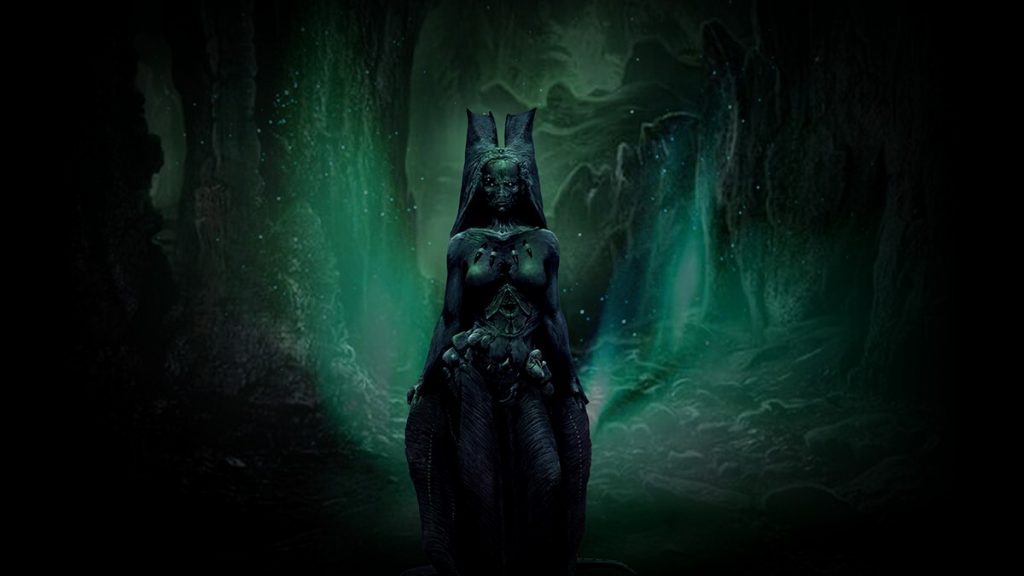
Bobayaga is the dark priestess. As historians say, she can’t be trusted. To represent her, we dressed her in amulets, chains, and a dark robe to deceive Arcadians into thinking of her as a helpful witch. “Mantras” and “Tantras” are tattooed on her body to signify rituals placed upon her creation. She is one of the most intimidating demons in the Underworld.
Luciyal (Horned Man of Pain)
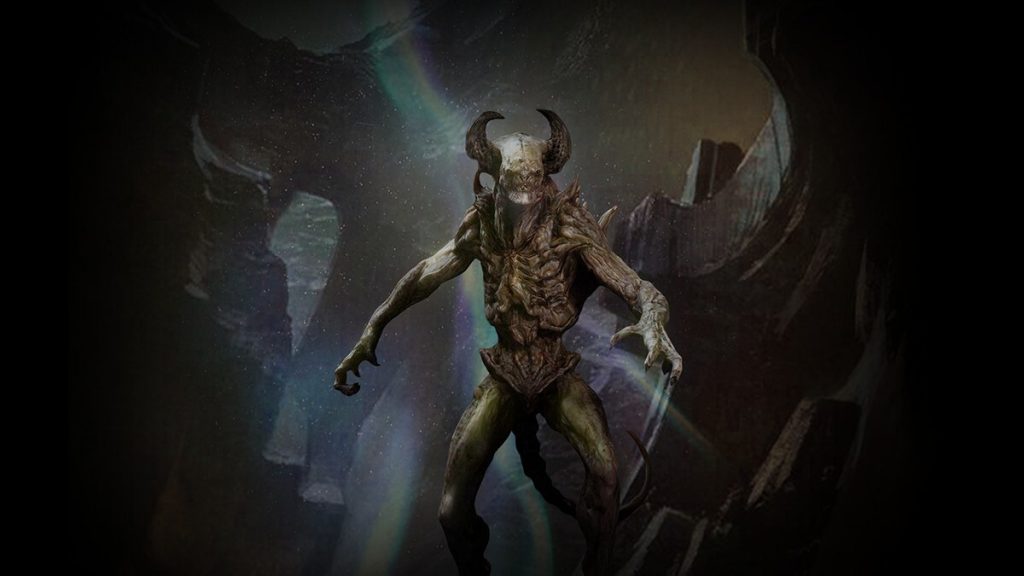
Luciyal can be confused with Norash sometimes, but Luciyal is more aggressive in pose and tenacious. This devil is portrayed in its true nature but can morph into any being to take its soul and roam the Arcadian lands. Since it is said that Luciyal could be a cross-world demon, it is best represented as a prehistoric creature.
Bafomot (Goat)

As a hidden message, we added an axe as a weapon for Bafomot symbolizing cattle brutality and hence his punishment towards attackers. Besides having fur over its body, Bafomot has goat hooves and the claws of a man.
Gwuai (Bear of Famine)
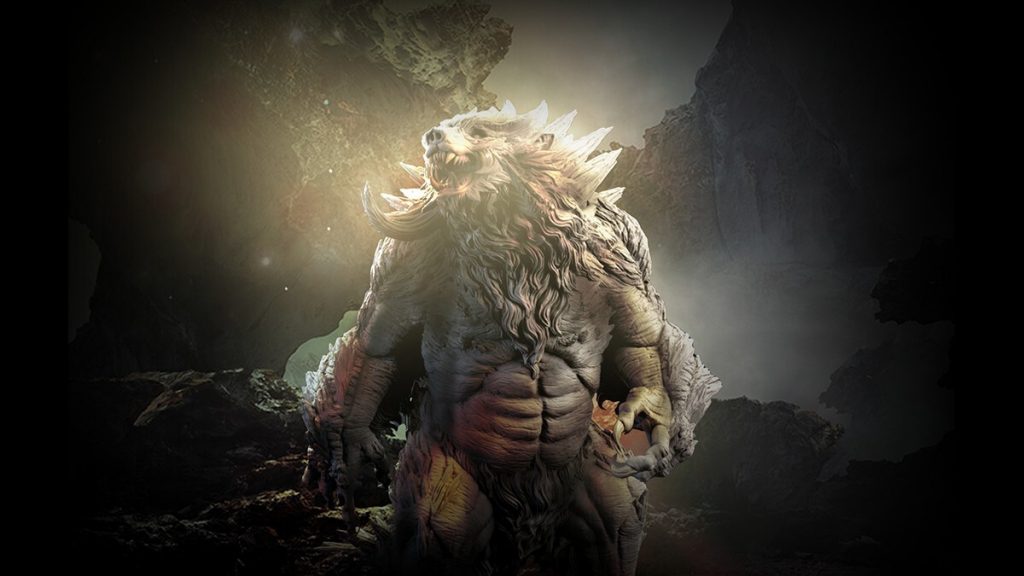
Just like Eshay, Gwuai’s features are suited for high-altitude environments. Being a massive beast, this giant bear is muscular and intimidating. The statue itself can sometimes let out a roar to showcase its presence.
Nostros (Wolf Shapeshifter)
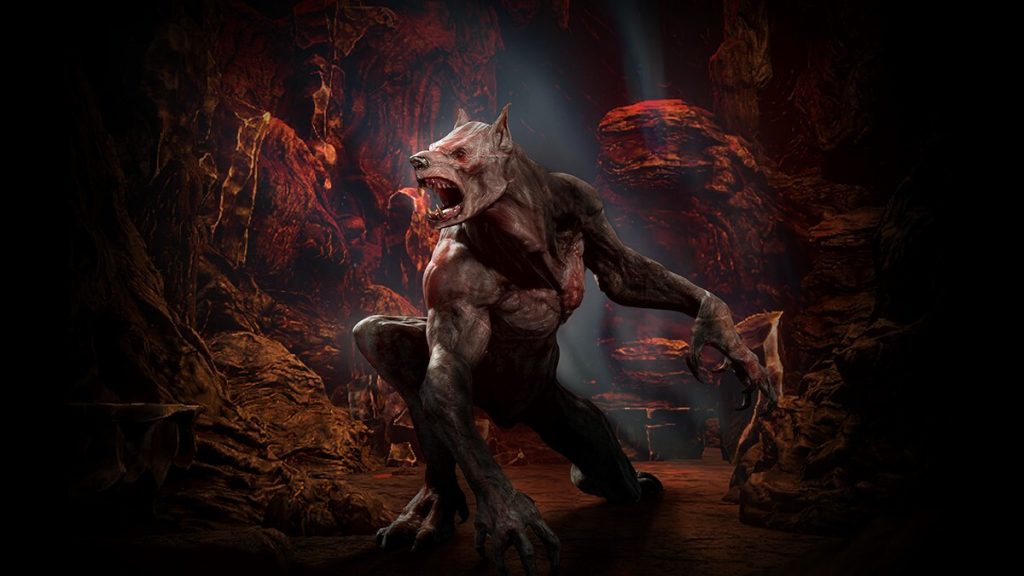
Nostros is lean and slim in its primary shape of a “werewolf.” As a wolf without fur, it changes shape as it evolves and returns to its anonymous form. Hence, less energy is expended on creating a coat around the skin. Instead, more detail is added to the face of the creature with a strong jaw and pointy ears to sense prey.
Palik (Sire of Lust)
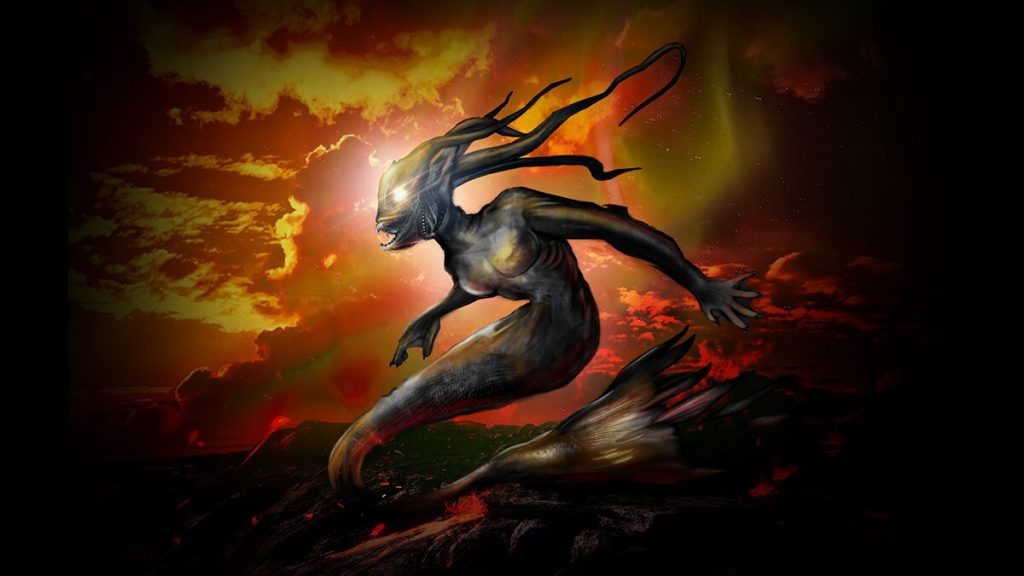
Here, we showcase Palik’s proper form of a mermaid. It has the skull of a deep sea fish and large gills to stay out of water for a while. But, please, do not mistake the hair for what they are; they are tentacles used to latch onto her hypnotized prey. Her tail is also razor-sharp and used as a defense mechanism for distancing herself from hunters.
Decimus (Greed of the Fallen Man)
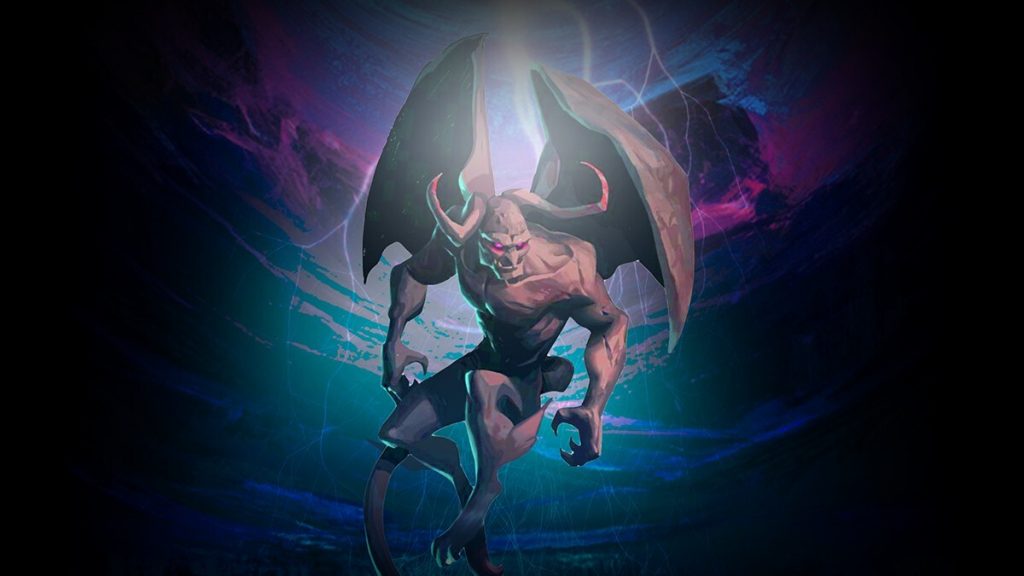
Similar to winged demons, Decimus is much smaller but has more flying speed than all airborne creatures. Its four wings over its arms and legs provide stability and can sharply change its course. One of its superpowers could be reducing its size to that of a bee to torment Arcadia’s inhabitants.
What’s next?
This extract brings more attention to the crafting of the fantastic beasts of Arcadia. We look forward to the Demons Game and hope to bring life to the demons, demonstrating their abilities in fights. Our role in the Art and Creations department is to make the experience of our users an enriching and immersive one through our visual concepts and stories.



